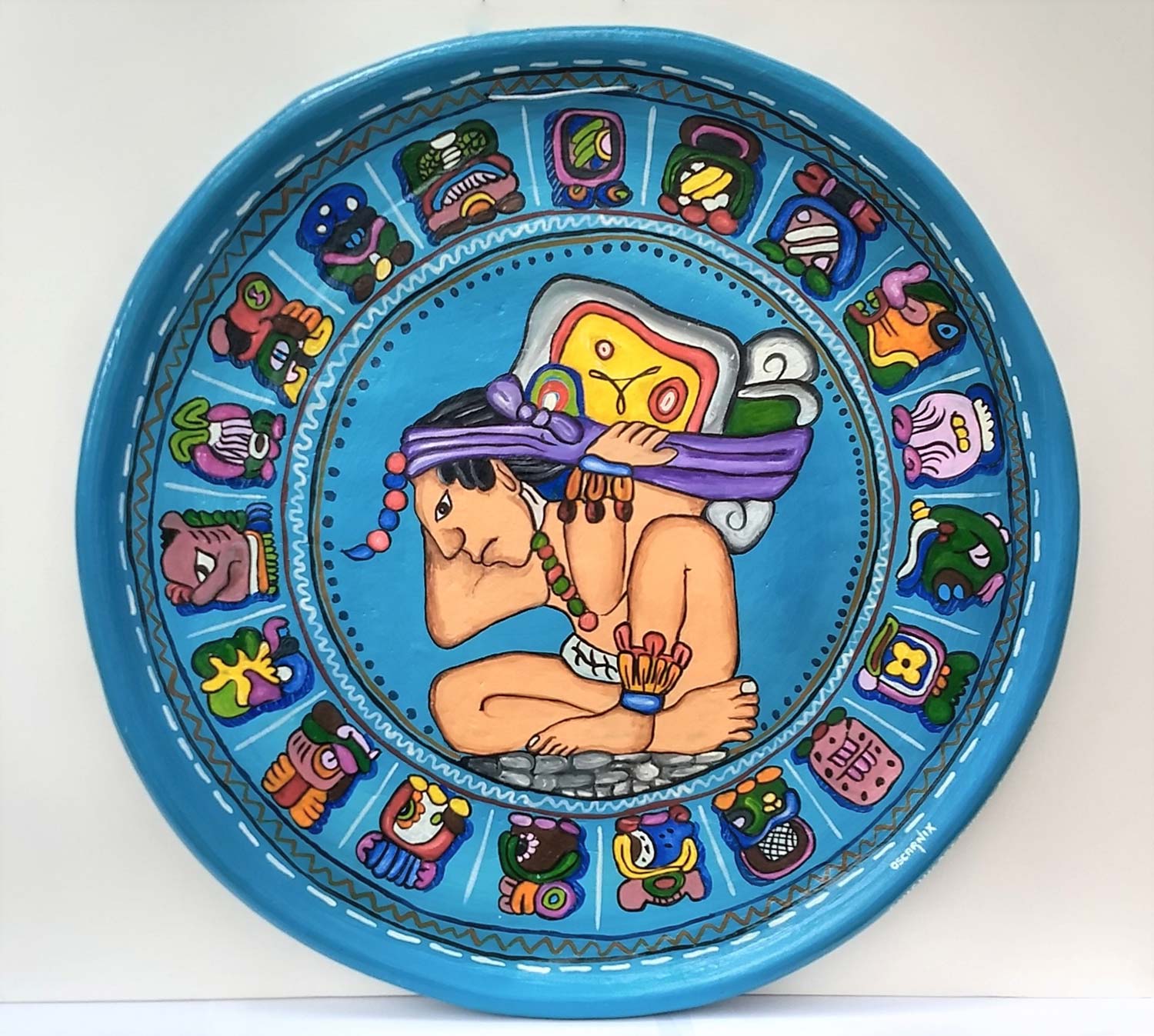Here, Oscar Fernando Nix chose to adorn a comal, a traditional Maya earthenware griddle, with glyphs of the twenty days of the month.
The Cholq’ij is the 260 day Maya ceremonial calendar which works in conjunction with the Maya solar calendar. The twenty days of the Cholq’ij are usually represented as a circle containing the glyph for each day. These days follow each other in a regular order. A day will have one of thirteen levels of energy, represented by a number preceding the day glyph. During the Cholq’ij, each of the twenty day signs will pass once through all thirteen levels of energy, and this makes a calendar of 260 days.
The Cholq’ij informs the work of the Ajq’ijab’ (spiritual guides), Iyomab’ (midwives), and K’exelomab’ (women preparing to become midwives). In the K’iche’ Mayan language q’ij refers to “day,” and chol means “explanation” or “untangling.” The Maya believe each day is sacred. The spiritual professions—the spiritual guides and midwives—use the Cholq’ij to untangle or explain the energies of the day. They help a person or community understand their destiny within the sacred time and space.
Note that the comal, found in every traditional Maya kitchen, is an earthenware griddle used for cooking tortillas. The comal is a large, gently concave circular disk which may have a low rim and may be unglazed or glazed. The stylistic differences of the comales and all Guatemalan pottery depend partly on the particular pottery center where it was made, but more importantly on the costumbre (tradition) of the women of the town where it is used. Until recently, all Maya women did their cooking on a fire on the floor of the kitchen. The comal was traditionally propped over the fire on three hearth stones, which represented the three stones of Creation as described in the Popul Wuj. While tortillas were originally cooked on heated rocks, comales have been used since 900 A.D. This everyday item in Maya households ties directly to pre-Hispanic traditions.


